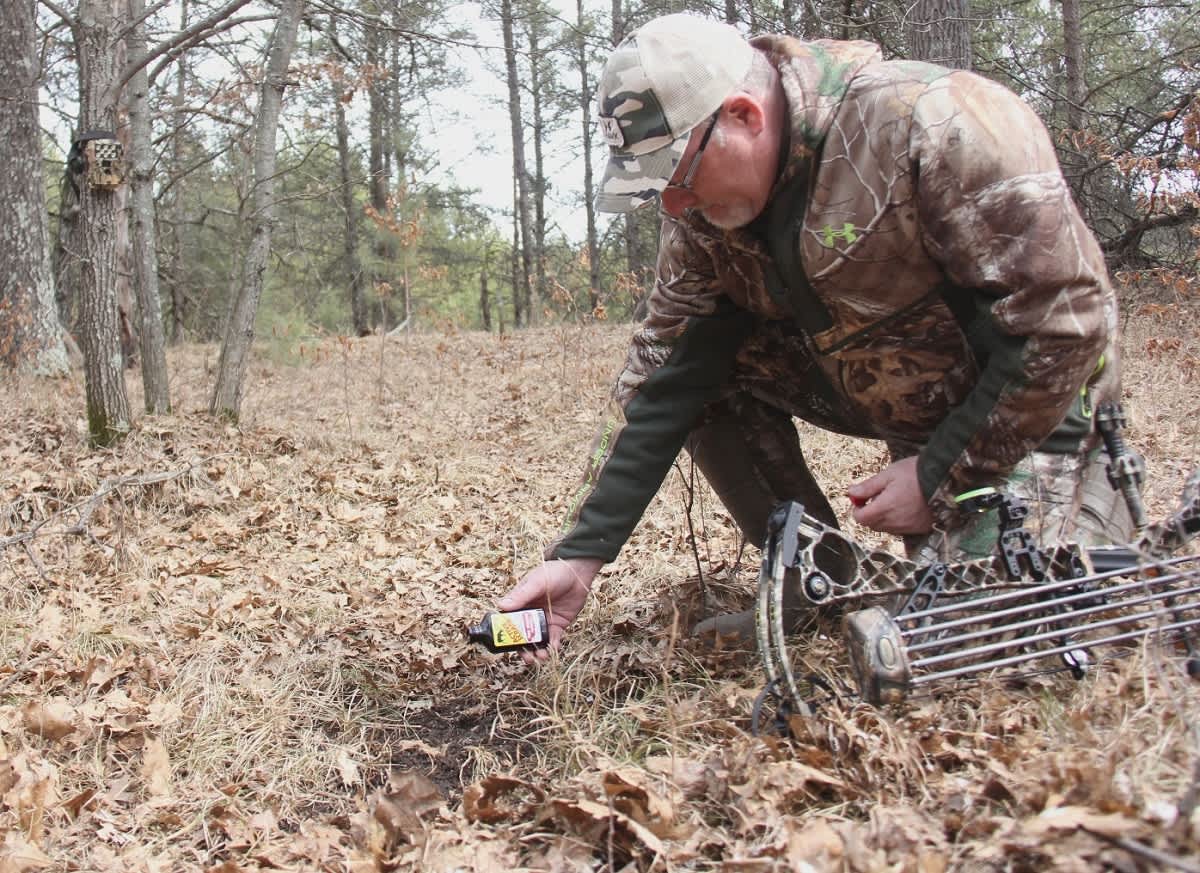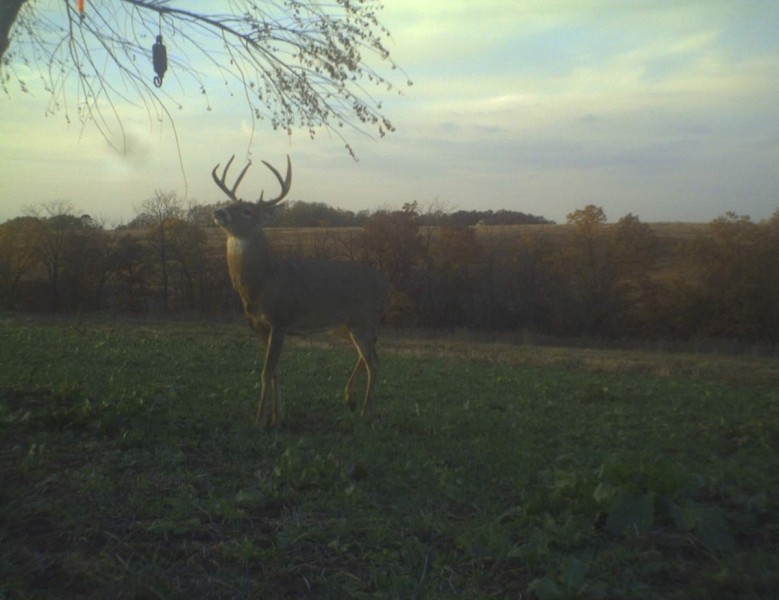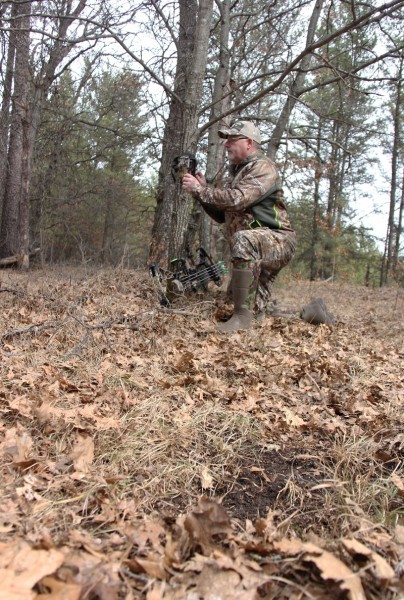4 Ways to Make the Most of Early Fall Scrapes
Bernie Barringer 08.26.15

Almost every deer hunter I know gets excited about seeing a scrape with fresh tracks in it near the area they hunt. In fact, many hunters who come across one in November just put up a treestand there and start hunting. Many hunters do not realize that bucks will begin making, and subsequently visiting, scrapes as soon as raised testosterone levels cause their velvet to fall off.
There’s a problem with immediately setting up over those scrapes in November, though—bucks may not be back for days. They are off chasing does and don’t care much about the scrapes unless they are fresh out of love. Early-season hunting in the generaly proximity of fresh scrapes offers much better odds.
But there is one aspect of using scrapes (natural or man-made) that offers the most value to the deer hunter. This is the ability of a scouting camera to get a photo of virtually every buck in the area using a scrape as a drawing card. Here are four tips on how to make the most of scrapes.
1. Scrape drippers and scents
There have been several scientific studies conducted to learn how and when bucks visit scrapes. These were done by placing a camera at the scrape and recording the times and durations of the visits. These studies have consistently shown that the overwhelming majority of visits are under the cover of darkness.
But every one of these studies are missing one important thing: bucks do not have to physically visit a scrape to check it. They are more likely to stay back in cover, especially during daylight, and check a scrape by scenting it from downwind. In my opinion, because the cameras in these studies are right at the scrapes, they miss a lot of daylight visits.
I use scents in scrapes to attract bucks. My favorite for many years has been Special Golden Estrus. I typically apply a fresh dose of scent right into the scrape when I am hunting in the area of the scrape.

I have had excellent success using a scrape dripper with Active Scrape Lure to bring bucks right into the scrape. Any buck that circles the scrape and checks it from downwind is more likely to come right on in if the scrape has a fresh smell in it. Because the lure is constantly dripping, it constantly smells fresh.
2. Inventory with a scouting camera
I have found no better way to inventory bucks in an area than by putting a scouting camera on an active scrape. Day or night, most every buck in the vicinity will visit the scrape within three to four days.
This offers me several advantages. First, it helps with the shoot/don’t shoot decision making process. I hunt public land a lot and I travel to new areas. It can be very difficult to gauge the potential of an area without getting an inventory of local bucks. I’d hate to shoot an average buck early in the hunt when there are a couple dandies in the general area. A thorough inventory helps make decisions easier.
Another advantage is in knowing the direction from which a buck approached a scrape and which direction he left in. This can be invaluable in patterning bucks and determining their feeding and bedding preferences. In the evening, he is more likely to be coming from a bedding area and in the morning he is more likely to be returning.

3. Hunt them early
You will see some large scrapes start to appear by late September and many of them are in full use fairly early in October. Do not wait until the rut in November to hunt them, bucks are visiting them early. Archery hunters have an edge here and few of them take advantage of it.
I have become convinced that hunting near scrapes is even more effective in October than it is in November. Scrape use is much more consistent before the rut causes bucks to abandon any sense of daily activity pattern. Scrape visits become more random as the calendar turns to November. Hunt them early!
4. Hunt the downwind side of them
Here’s where most hunters make a mistake. I mentioned earlier my theory that most bucks just scent check scrapes during daylight hours and only come in to the scrape if there is something that creates a strong urge to do so. If you hang your stand right at the scrape itself, you will miss out on much of this action for two reasons. One, the buck is likely to be out of range when he comes along, and secondly, if he can smell the scrape, he can probably smell you as well. It’s better to find the right tree 20 to 30 yards downwind of the scrape and hang there.
This year, don’t wait until the rut to start using scrapes to your advantage. Once you learn where bucks tend to make scrapes, you can make your own that are just as successful as the natural ones, plus you have the advantage of positioning them right where you want them. Watch the video below for more details on how to create a mock scrape.
Follow Bernie’s bowhunting adventures on his blog, bowhuntingroad.com.

